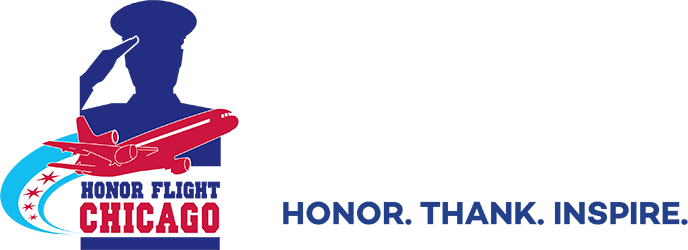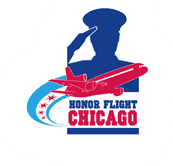Army Vietnam War Lowell, IN Flight date: 05/14/25
By Al Rodriguez, Honor Flight Chicago Veteran Interview Volunteer
By the age of 18, James Cox had never flown in any type of aircraft. Despite that fact, he wanted to fly helicopters so he enlisted in the Army. He was given that opportunity twice in Vietnam. After his first tour he was sent back to the U.S. to train new helicopter pilots. Within a few months he volunteered to go back to Vietnam. He said, “It was more dangerous being a flight instructor than being in Vietnam. The students were out to kill me.”
James was born in 1948 in Gary, Indiana, but raised in the outskirts of Lowell, Indiana. He came from a family of eight siblings: five boys and three girls. His older brother Tim served in the Marines for 23 years. Following in their military tradition, James’s son Sam enlisted in the Indiana Army Reserve. Sam did four tours in Iraq and Afghanistan and retired as a Sergeant Major with 32 years of service.
James graduated from Lowell High School in 1967 and enlisted in the Army signing up for the Warrant Officer Rotary Wing Aviator Course which would teach him to fly helicopters. The Army badly needed helicopter pilots in Vietnam. Since he enlisted on a delayed entry program he didn’t have to report for basic training at Fort Polk, Louisiana, until March 1968. While in basic he got pneumonia but it didn’t delay his completing his training on time.
After basic training he went to the Warrant Officer Rotary Wing Aviator Course which was located at Fort Walters, Texas arriving there in May 1968. James said they were a class of 220. He said in the first 8 weeks the instructors tried to weed them out. One instructor told the class that half of them would die in Vietnam, life expectancy for pilots at that time was 30 days. There was also strenuous physical training. They had to carry another student on their back for 1 mile. Anyone not able to complete this task was dropped. The first time he was up in a helicopter, after 5 minutes the instructor gave him the controls. Three hours into this training he said he was in sheer panic and thought he would never be able to fly. But after 10 hours of flying he was soloing. Everyone who soloed got the traditional pool dunk. Those that didn’t were dismissed. After completing his 212 hours in the air, James graduated in January 1969. He said he loved flying helicopters. At his graduation he was commissioned as a Warrant Officer, WO-1. Warrant officers hold a unique position in the military, possessing specialized skills and acting as technical experts but their rank is below that of a commissioned officer and above non-commissioned officers.
James was sent to Hunter Army Airfield in Savannah, Georgia, for his primary helicopter training. This is where he first flew a Bell UH-1 helicopter, nicknamed Huey. At Fort Walters they were taught basic take offs and landings. At Hunter they had to finesse the helicopters into different landing areas. He finished this training and all 120 students that graduated received orders for Vietnam. He went home on a three-week leave before reporting to Fort Lewis, Washington for his flight to Vietnam. His dad drove him to the airport. He arrived and was processed to go to Vietnam. Sadly, the day after he got to Fort Lewis, his dad died and he returned home for the funeral. He reported back to Fort Lewis and the next day flew out to Vietnam.
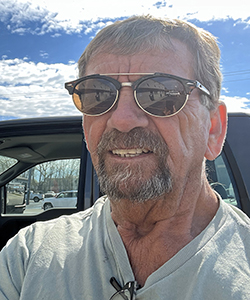
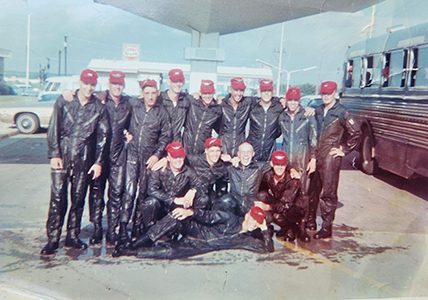
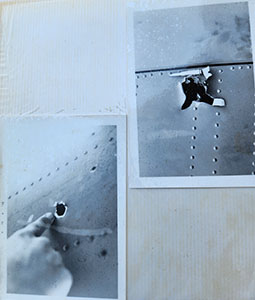
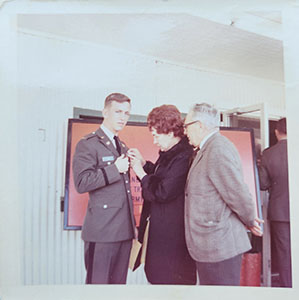
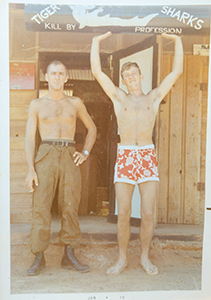
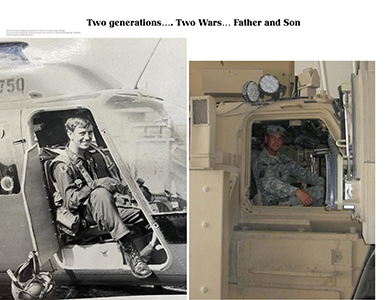
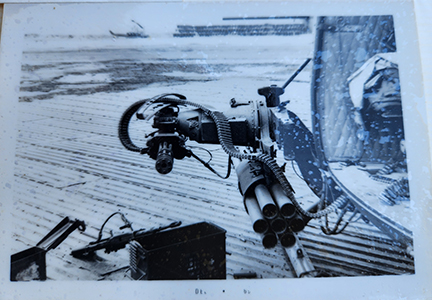
In February of 1969 he arrived in Cam Rahn Bay, Vietnam, and was sent to the 192nd Battalion Headquarters. The battalion commander asked him what kind of duty he would like and James told him he wanted combat duty. He was assigned to the 192nd Assault Helicopter Company at Phan Thiet. His first duty was as a slick copilot. Slick was Army slang for the Bell UH-1, transport helicopters, Huey. These helicopters were stripped down so they could carry the troops and supplies out to an assignment. The helicopter crew was composed of the Aircraft Commander, Copilot, the crew chief and the door gunner. After three months James was assigned to a gun ship helicopter. This was also a Huey but it was fitted with weaponry, on both sides of the helicopter skids on pylons, M134 minigun machine guns, rocket launchers. The door gunner and crew chief had a M60 machine gun each that they fired from the doors with feet on the skids. The miniguns were tied to one aiming device and were capable of firing 4,500 rounds per minute. They had to carry over 1000 lbs of ammunition for these weapons. Because of the weight, in order to get airborne they had to take running starts, the front of the helicopter angled down the runway until they were able to lift up into the air. He said there were a primary team and a secondary team on call to support the troops in the field. The assignment of the day designated what helicopter he would fly. A siren was their signal to get to their helicopter and be airborne within 2 minutes to support the combat troops needing help, the helicopter being loaded and ready. If the support was critical both teams would be sent. The crew wore flight suits made of Nomex to make them fireproof. They couldn’t wear underwear because they were made of cotton and could burn under the flight suit. He said that while waiting for the siren to sound they would sunbathe, boots on with the suit down around their ankles so they could swiftly pull it up.
On his first mission the gun ship was sent in to ‘lay fire’ into an area ahead of a troop landing. They would then give support to the troop transport helicopters by flying next to them and fire support while the troops jumped out of the transports. After three months James became an Aircraft Commander and he was promoted to a Warrant Officer 2, WO-2.
James said that because of the gunship’s capability, firepower and speed they didn’t get shot at as much as the transport helicopters. Although there were times after a mission when they checked the helicopter for damage they found bullet and shrapnel holes they didn’t know were there. He said he was lucky not being wounded with only a slight cut on his hand, even though he survived a helicopter crash. The helicopter he was flying lost power, spun out of control and crashed into a hillside. His crew chief was ejected and the helicopter landed on him. The crew chief lost part of one leg but everyone else was ok. They were picked up safely. Halfway through his tour he received R&R to Sydney, Australia. He said he loved Australia and that the Aussies treated him better than some of the people in the U.S. James said he received a Bronze Star but was not sure for what particular action.
James’ Vietnam tour ended in February of 1970 and he was assigned to Fort Walters, Texas, as a flight instructor. He said that job was more dangerous than flying in Vietnam. During his year in Vietnam under combat conditions, there were three fatal crashes. At Fort Walters there was a fatal accident every month. After 9 months and when they started bringing in foreign trainees, he decided to volunteer to go back to Vietnam. The Army agreed and he got orders for Vietnam.
On January of 1971 James was back in Vietnam assigned to the 17th Artillery Group in Pleiku. He wanted to fly gunships but they assigned him to a safer job as the Artillery Group Commander Pilot. He was responsible for 8 other crew members. He flew the battalion commander to the different fire bases under his command in a Kiowa – Jet Ranger, Bell OH-58 helicopter. James said that he would drop the commander off and then fly away because the enemy knew the helicopter held a high-ranking officer and would target it with mortars and small arms fire even when he didn’t have him onboard. One gunshot went through the windshield right next to his head. In another incident, James was sitting in his helicopter waiting to take off but because of weather conditions he was grounded. A mortar attack started up, he ran towards the bunkers when a mortar hit three feet from his helicopter knocking him to the ground and destroying his helicopter.
Sadly, during his second tour, James’ brother died in a car accident and he was allowed to return to Indiana for the funeral. He said in two tours in Vietnam, he made three trips across the Pacific to the U.S.
Between March 16th and the 19th, 1971, he was awarded the Distinguished Flying Cross Medal for going above and beyond the call of duty for landing multiple times in the midst of rocket attacks on the Phuan Nhon firebase to evacuate injured soldiers. They credit his timely evacuation on saving the life of one mortally wounded soldier.
When his tour ended In December 1971 he flew back to March AFB, California to be discharged from the Army. His mom had moved to San Diego so he moved there. He went to college for a year but said it wasn’t for him so he moved to the mountains near Sequoia National Park and started working as a carpenter. He was there for four years. He moved to Montana and worked as a carpenter for about a year before he got homesick and moved back to Lowell, Indiana. James was hired as a carpenter with Inland Steel. He married in 1978 and joined the Army National Guard in 1981. In the National Guard he flew the medical transport helicopter.
In 1982 he was hired by Indianapolis Methodist Hospital flying their helicopter for medical transport. He quit his job at Inland Steel and moved to Indianapolis. He said they picked up accident victims and transported patients to Methodist Hospital from Indiana, Illinois and Ohio. He logged about 500 hours a year but was scheduled for 2900. He spent many hours on standby. One day talking to the hospital dispatcher he found that they made more money than he did so he started looking for another job. James was hired by Hasten Bancorp in 1989. His job was to fly the CEO wherever he wanted and the company bankers to audit banks they were interested in buying. In 1991 they decided to sell their helicopter and he lost his job but not before selling it for them and receiving a $5000 commission. He found part time work flying for Channel 13, NBC in Indianapolis on the traffic helicopter. That job ended and he went to work for Kirk Aviation flying a helicopter in Southern Indiana on power line patrol. He would fly along power lines while they were inspected for breaks and other problems. He even transported Bobby Knight three times to events.
In 1994 he decided to move back to Lowell and open his own business, Floors and More. They specialized in installing hardwood floors. James retired in 2014 but he’s still working. James hobby is still carpentry. He recently helped put in a hardwood floor. He has a wood shop at his house in Valparaiso where he builds different style birdhouses and bat houses. His bat houses are for varied occupancy, up to 300 bats can fit in one of his houses. He said he builds them because bats are a natural insect control and these houses will keep them out of your attic. They call him batman and he has that logo on the side of his trailer that he uses to sell bird houses and bat houses at the local farmers markets. He has 6 grandchildren and 3 great grand children.
James went to D.C. as a kid but he’s never seen any of the war memorials. He especially wants to visit the names he knows on the Vietnam Memorial Wall.
James, enjoy your day of thanks!
